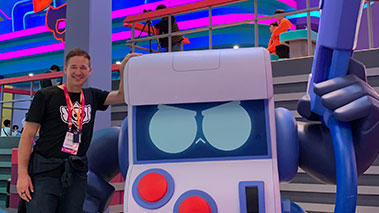
My Take on Supercell in 2019 as We Enter Our Second Decade
by Ilkka Paananen
Last year I wrote a blog post about highlights and lessons we learned over the course of 2018. The reason I decided to try it was that we wanted to foster a sense of openness with you, the players, and give you a sense of what the world looks like from inside Supercell. It was the first time I’d done anything like it, and I must admit I was somewhat nervous about how it would be received. But, the great questions and comments that followed encouraged me to do it again this year.
By the way, when I told Supercellians that I’d write another recap, it was politely suggested that I should make it shorter and sweeter this time. Well, I can’t promise this will be short, and I don’t know if it will be sweet either, but I do promise to be open!
What makes this year very special for us is that Supercell will be ten years old. That moves us closer to being able to measure our games in decades rather than years, which is a great reminder of why we are here.
Our Dream: Games That Are Played for Years and Remembered Forever
When we founded Supercell back in 2010, our idea was simple: to create a new kind of games company that would be the best place for the best people and teams to create the best games – games for as many people as possible, that would be played for years and remembered forever. At the time, we were inspired by games like World of Warcraft, which many of our co-founders had played for years and years. For them, it was not just a game. It was a passion, a very important part of their everyday life, something that they played together with friends and also made new friends with. Our big dream was to create a similar social experience, and hoped that with a platform like mobile virtually anyone could be part of it.
During the almost ten years that Supercell has been around, many things have changed, but the founding vision described above has not. We don’t make compromises on it. In 2019, we saw several examples of this value in action.
First, and most painfully, we beta-launched and killed another game, one that we were very excited about: Rush Wars. The team behind the game killed it because based on the beta, they felt like this was not going to be a game that lots of people would play for years nor would it be remembered forever. The early gameplay was lots of fun, but it just did not carry over to the endgame.
I feel proud of the decision the team made. I cannot even imagine how painful it is to kill your own darling, something that you’ve poured your heart and soul into. That said, this is how we all want Supercell to operate: we should only release games that are of exceptional quality, games that the players love and games that have a shot at being remembered forever. Very importantly, at Supercell these types of decisions are always owned by the team who is behind the game. We feel that it is critical that the people who are responsible for the game also get to decide about its future.
Over the years, I have developed more and more respect for how incredibly difficult it is to create a new game. We at Supercell have been lucky to have released five great games, so one might think it gets easier over time. But as the expectations of both players and us increase, that does not seem to be the case – quite the contrary!
The way we think about this is that the games we have killed are not failures. Instead, they are opportunities for us to learn. And over time, these learnings will result in us creating better games.
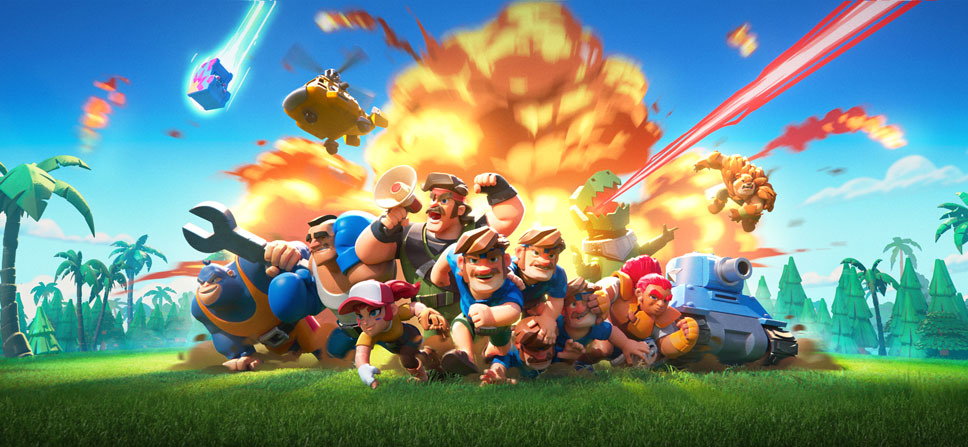
The second example of our values in action comes from our teams behind Hay Day and Boom Beach, who put out their biggest updates in the history of their games. Hay Day added “The Valley”, creating a completely new mechanic for the game, and Boom Beach added “Warships”, a new way to play the game together with other people. Millions of players still enjoy these games, even though they've been around for so many years, and that's why the teams have put so much work into these updates. Both Clash of Clans and Clash Royale as well as Brawl Stars also saw major developments, and I’ll get to them later.
The third, and final, example is about headcount. A major component of our mission – i.e. to be the best place for the best teams to develop games – involves keeping the company as small as possible. This is because we believe smaller size minimizes the amount of bureaucracy and processes while maximizing room for innovation. And, we all simply like to work in a smaller company! Anyway, last year some of our game developers actually got concerned that the company might be getting too big too fast as we grew to just over 300 in size. We had a big discussion about this and, as a result, decided to slow down our growth significantly until we feel confident that we can keep our culture intact despite the growth.
For someone outside Supercell, the above might sound really odd, even very inward focused. But, we believe that without our unique culture, and the small-company feel that goes with it, we could not develop the best games for you. Balancing things is not always easy and, as you may guess, we have our internal struggles, too.
My favorite book of last year was “What You Do Is Who You Are” by Ben Horowitz, where he talks about how culture is defined by actions, not by what you say. All three examples above are great showcases for what our culture is about, because they are concrete actions our teams have taken that reflect our values. They’re also testament to how much our founding vision means to our people, and the sacrifices they are ready to make to keep this the best place for the best teams.
Brawl Stars’ First Full Year!
2019 was the first full year for Brawl Stars as a global game. As some of you may know, the game spent a very long time in development and in beta before the team decided to release it. What made things particularly interesting was that internally, prior to the beta, even Supercellians (the passionate gamers and developers that they are) had mixed feelings. Some absolutely loved it, others less so. There were heated discussions about the art style and controls, and even whether Brawl is “a Supercell game” to begin with. But, the team kept working hard to improve the game, making massive changes to the game in beta. Seeing really incredible feedback from the community, they decided to launch Brawl Stars globally.
And what a year it turned out to be for Brawl! The game grew in popularity all year, and the number of players still keeps increasing month after month. One of the most amazing things was Brawl becoming the #1 game in South Korea, a country with a very strong local game industry and home to some of the most passionate players. At one point, we calculated that almost 1 in 10 South Koreans were active players of Brawl! And because of Brawl’s popularity, and the continued success of Clash of Clans and Clash Royale, we actually became the largest games company in South Korea measured by monthly active players for the second time in our history! It was crazy and humbling for us to think that a relatively small company from a distant country like Finland could achieve success like this in a country like South Korea!
Brawl’s success inspired us to go above and beyond to bring the game out to an offline space where communities can come together and enjoy. We opened something we call “Supercell Lounge” in Seoul. We wanted to create a cozy living room like place for our players to play our games, experience the brands and of course meet each other. We also had chance to participate in 2019’s G-Star, South Korea’s largest gameshow, where we hosted the first ever Brawl Stars World Finals and filled up the city of Busan with Brawl characters that players loved.
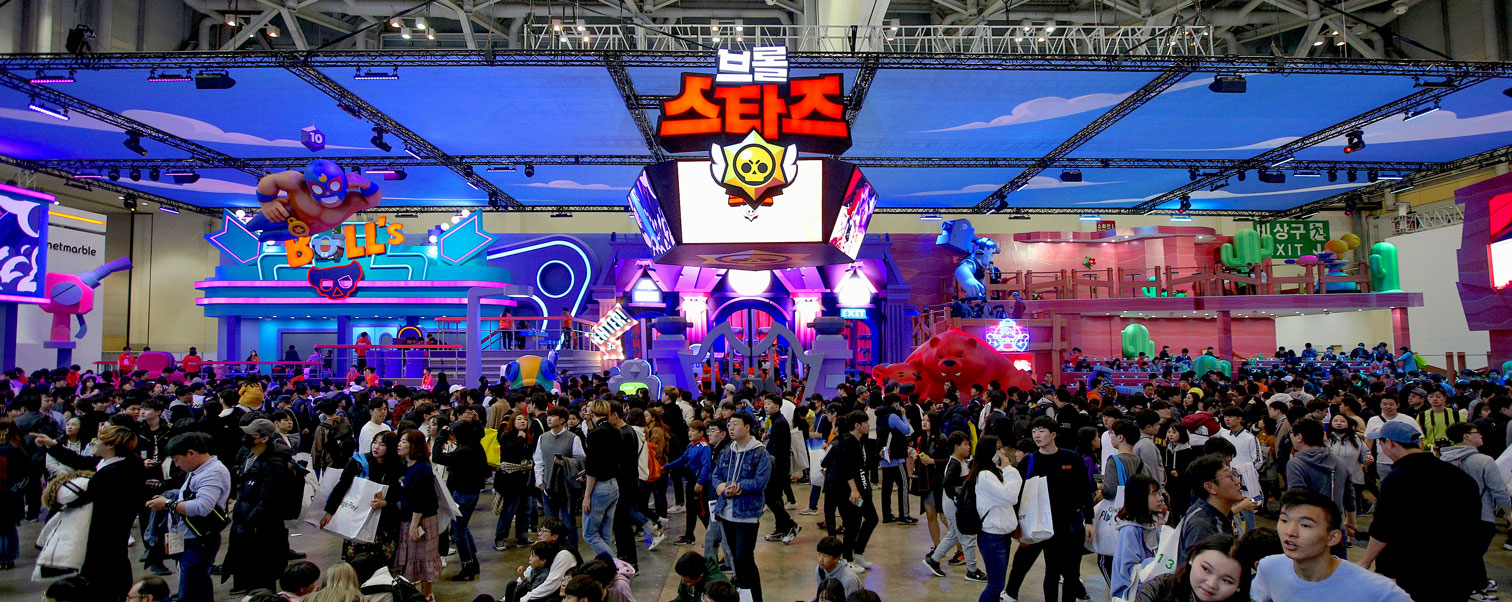
And while we are on the topic, I wanted to give big congrats to Nova Esports who won the first-ever Brawl Stars World Finals! It took place in Busan during G-Star, some would say the birthplace of esports.
Esports will be a significant part of Brawl Stars going forward. For us, it is very important that everyone will get a chance to participate. Because of this, just a few weeks ago, the Brawl team launched a monthly challenge in-game, through which anyone playing the game can try to qualify for this year’s championship! It has been hugely popular so far, more than two thirds of Brawl players have participated at this point!
In 2019, we also partnered with the amazing people at LINE FRIENDS to bring Brawl Stars merchandise to our players. They put together a line-up of products around the Brawl Stars World Finals 2019 and also launched an extremely successful pop-up store in the heart of Seoul during the holiday season. I am personally very excited about this partnership as it feels like they share our passion for Brawl and really understand what this brand and game is about. We are very much looking forward to bringing merchandise to our players around the globe in 2020!
As I mentioned in my post last year, the Brawl Stars team wants their game to be Supercell’s most community-centric game ever. They take this very seriously and made some great strides to deliver on this vision last year.
First, the vast majority of the new maps they introduced to the game were inspired by the community. But they also got inspiration from the community in many other ways. Perhaps the coolest example of this was the introduction of a new skin for Nita in the game. A few people in the community came together and created an initiative to gather funds over live streams to make donations to wildfire relief efforts in Australia, with Koala Nita as their mascot. The Brawl team picked it up and made it reality, with Supercell vouching that we will make donations to wildfire relief efforts in Australia 1:1 based on net-proceeds from the sales of the first two months.
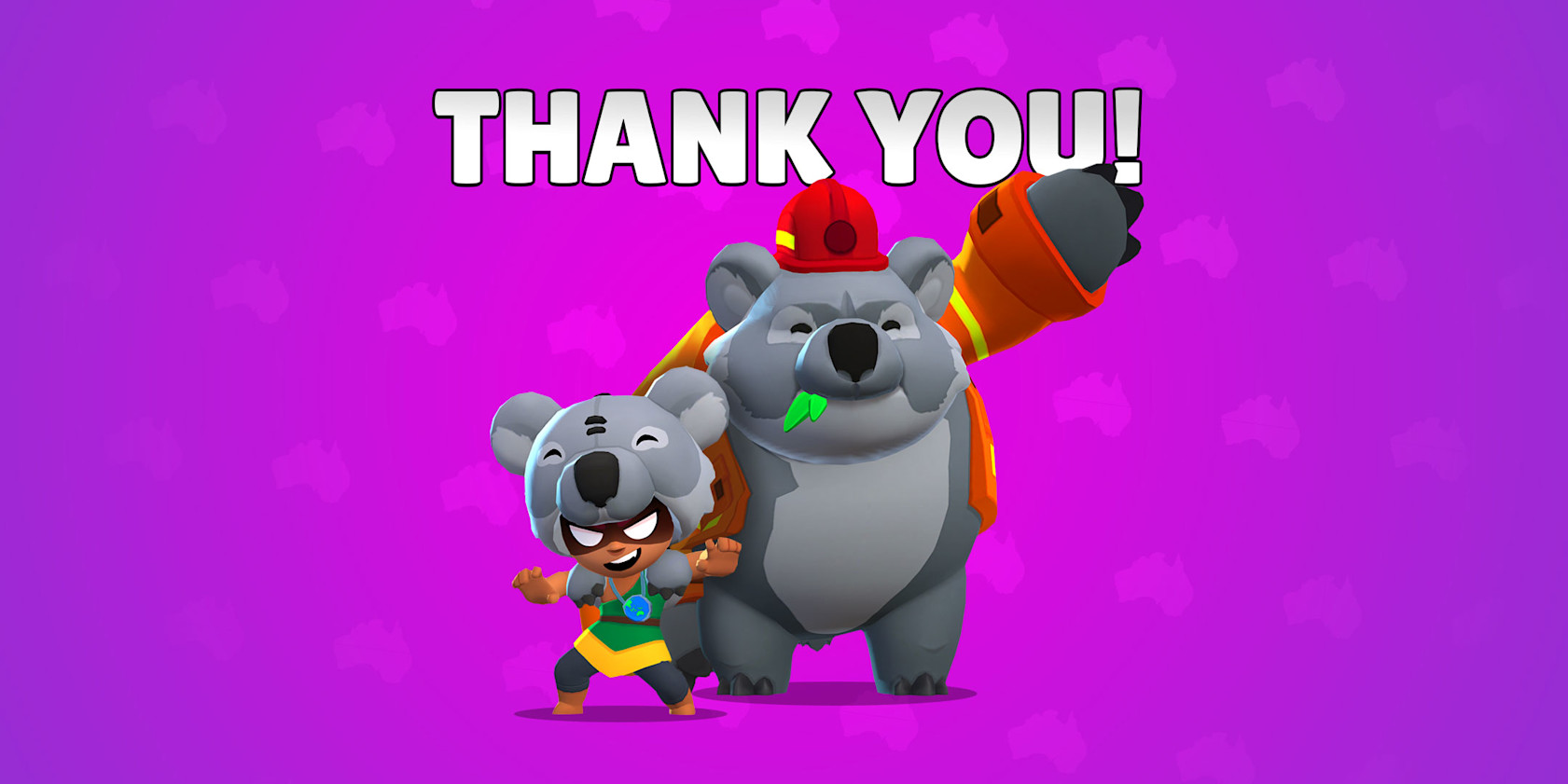
Second, Brawl Stars recently spearheaded the launch of Supercell Make, a platform that allows artists to submit assets that our game teams might include in a future update. The first round of community-created skins just ended with 219 original submissions for the beloved character Bo. The votes have been cast by the community, the first winners selected, and we’re preparing for the second campaign! So far, Supercell Make already has 130,000 registered users!
Third, our community team also recently rolled out the Supercell Creators program. It allows us, and the players, to provide more support to the amazing content creators around us. Our aim with the program is to help creators bring value and joy to their communities and better sustain a very demanding career. We provide our Content Creators with a revenue sharing program, in-game promotion, and a direct line of communication with the game teams. We believe that our Content Creators are vital to our success, and hope to continue growing with them. Without you, Brawl Stars would certainly not have entered the top ten most viewed games on YouTube list in 2019, the only new game on the list!
Clash Evolution
This year Clash of Clans will celebrate its 8th anniversary, while Clash Royale turns four. Both teams continue to work hard to improve the games for our players. Some members of each team have been working on the games since they launched! And we know that both games have a bunch of players who have played every day since the games launched (!!), for which we are humbled and grateful.
Clash of Clans received two big updates with Town Hall 13 and Builder Base 9, both giving players a bunch of new stuff to build and battle with, including new troops and a first new hero since 2015: the Royal Champion! Clash of Clans and Clash Royale also introduced seasons and seasonal challenges as well as game passes. We’re happy to see how so many players seem to appreciate the content and value that the passes provide – with a monthly price that is roughly half of popular entertainment streaming services. This year, players of both games can expect to see even more interesting seasons and also some big feature updates, which at least we feel excited about!
2019 was also a big year for Clash esports with Clash Royale League World Finals taking place in Los Angeles, and the first Clash of Clans World Championship was held in Germany. Congrats to all of the teams, and especially Clash Royale champs Team Liquid and Clash of Clans champs Nova Esports (those guys again!)!
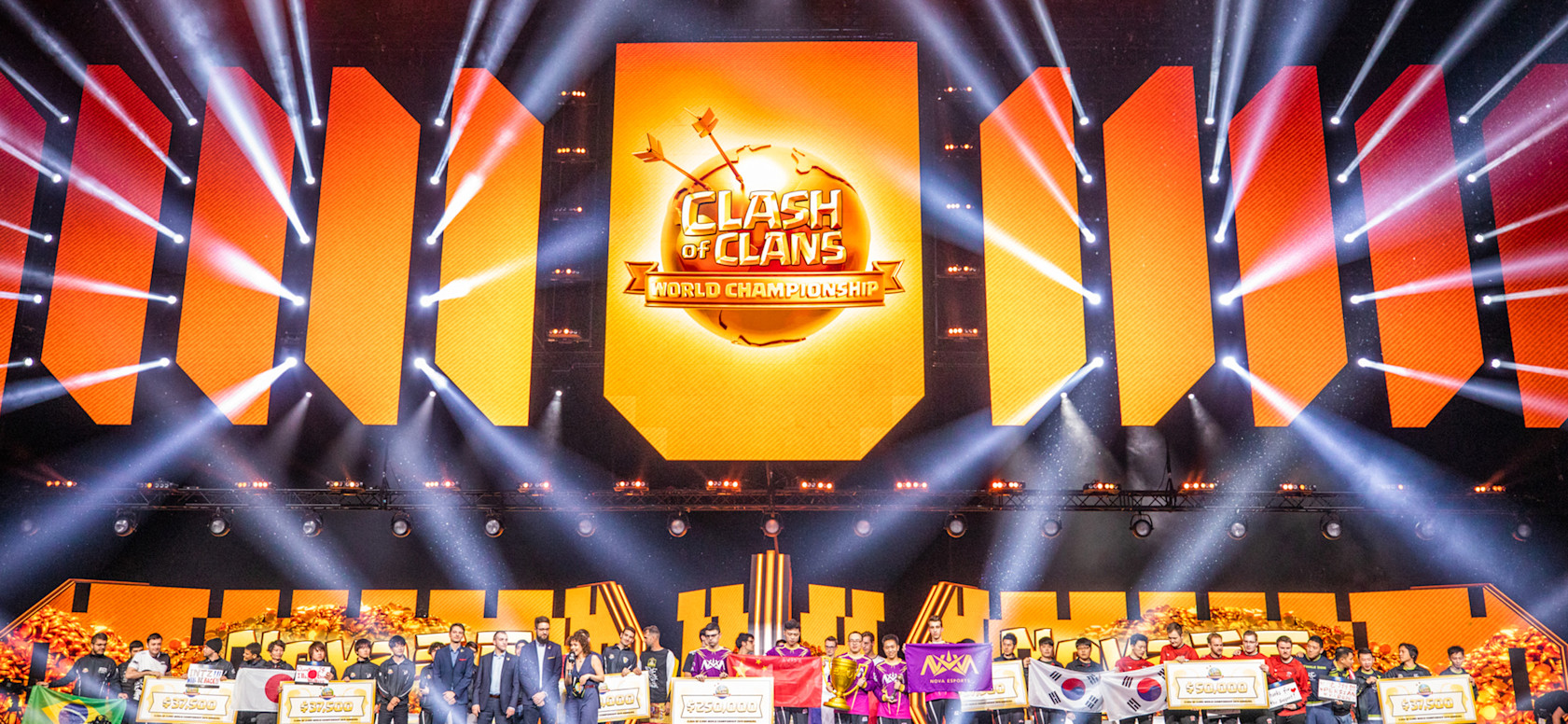
New Year, New Teams, New Games (hopefully!)
In last year’s blog post, this is what I wrote about new games:
And last but not least, there are of course many new games in the works, all in different stages. Some are quite close to a state where we could imagine trying them in a Beta phase, others are further away. As usual, many of them will be killed before anyone outside Supercell will see them. But, with some luck, you should see a game or two from us in Beta this year. And then it is up to you, if enough players like them, we will release them globally.
This is still exactly how I feel about our pipeline of new games today! Lots of exciting new games in the works, and with some luck our teams will decide to release one or two of them to beta later this year :)
A few years ago, we started to also invest in other talented teams outside of Supercell. We thought that this would be a way for us to do two things that were important to us at the same time. First, it would give us a chance to help bring more great games to the world and work with more amazing people across the world. Second, this approach would enable us to do so without growing our internal headcount too much.
In 2019, we were lucky to get an opportunity to invest in three external teams: Luau Games in Malmö, Ritz Deli Games in Oakland, CA, and Wild Games in Stockholm. We know it takes time to build a new company and create great games so we will patiently support them and their dreams. That said, this year, I think we will see some very exciting games from some of these teams.
Thanks to YOU The Community!
Before moving on to topics outside of games, I wanted to give a big thank you to everyone who plays our games, and the larger community around them. Sure, it’s a cliché, but it’s true: we would not be here without you. There are so many examples of community highlights that deserve mentioning, but a few that come to my mind are:
Hay Day’s Meet The Farmer video about 81-year-old Ana from South Africa, who plays Hay Day with her 88-year-old Sister Lily.
Clash of Clans dubbing 2019 “The Year of the Community”, owing to a thriving esports scene and a tireless commitment to finding new strategic depths in the game.
The first ever entirely community-made video for Brawl Stars.
For the launch of Warships, we invited Boom Beach content creators over for a tournament.
The Clash Royale community came together at our World Finals in December. The best players in the world faced off in front of a passionate live crowd and online viewers, creating one of our most exciting esports experiences so far.
So, thank you! We are extremely grateful for all of the support and love we get from you. We are inspired by the work you do every day and it drives us to work even harder to deliver even better games and experiences for you.
2019 Financial Results
As many of you know, according to Finnish law, during this time of the year, we need to report our annual financial results. I thought I would share them here as well.
Our financial results were slightly lower than last year’s. Revenue for FY2019 was at $1.56 billion, and our profits before taxes (EBITDA) amounted to $577 million. Even if we’ve never been that focused on the financials (rather our focus is on creating great games with great people!), I think this is a good result for a company of 300 people, especially in a highly competitive business like games, full of amazingly smart and talented people.
Our profits allowed us to contribute a total of €100 million (approx. $110 million) in corporate taxes to Finland this year alone. Many of us who have benefited from our free education and healthcare financed by taxes feel proud that we can contribute to our society in this way.
For us, the most important thing about good financial results like these is that they enable us to keep investing in making great games (including making our existing games even better) and think very long term.
A New Way of Teaching Coding
Outside of our core business, something that gave me great personal satisfaction this past year was the launch of Hive, a new kind of coding school in Helsinki inspired by the pioneering work done at École 42 in Paris. Hive is a tuition-free school where anyone can apply via an online test. What makes it very special is that it has no teachers or classes. Instead, students learn from each other by solving problems of increasing complexity.
The launch was a massive success! So far 3395 people have successfully completed the online test, out of which 142 students made it in and are now learning to code. We wanted to create an inclusive environment where everyone could learn how to code. So, it was great to see so many different people from different walks of life attending: Hivers’ backgrounds range from farming and kindergarten teaching, to musicians and business owners, to janitors and healthcare professionals, from 18 to 55 years of age!
Even though 43% of the Hivers had never coded before, they’re already going places: at the 2019 Junction (Europe’s biggest hackathon), two of the most competitive categories were won by Hivers! I find stories like this extremely inspiring and believe it is just the beginning of what we will see from their people in the future.
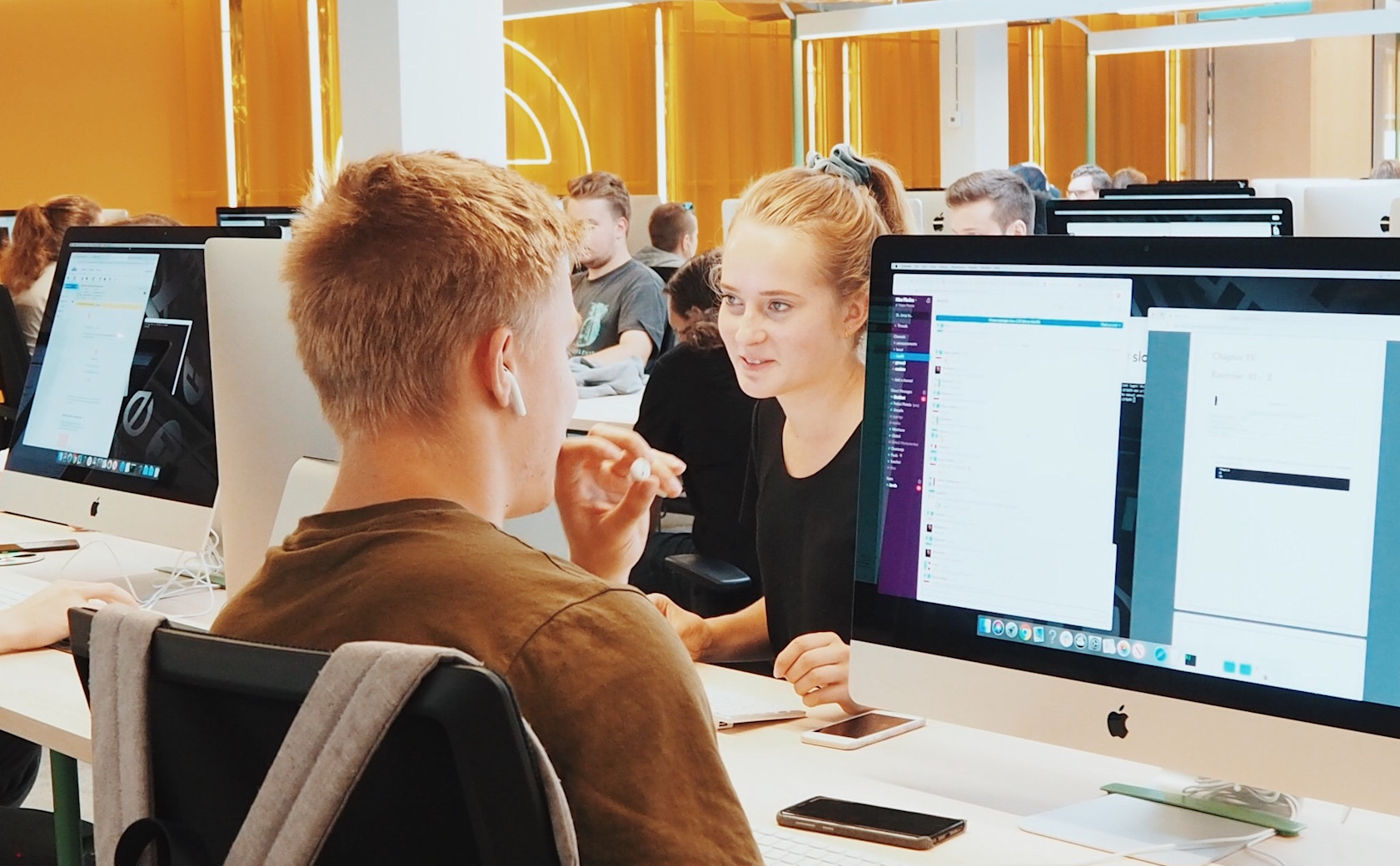
An Update on Our Carbon Neutral Goal
Also, a year ago, I wrote that we had set a goal to make Supercell carbon neutral in 2019. We wanted to do this by calculating the total carbon emissions resulting from our business, and then off-setting them using carbon offset services. We weren’t only interested in offsetting our direct emissions. We wanted to consider our total impact on the planet, including the footprint coming from our players’ devices as they run our games.
With the help of our data scientists and outside experts, I feel we got to a solid estimate of our total footprint, and we then offset those emissions through a partnership with South Pole. It may be a small thing considering the massive challenge our world is facing right now, but we wanted to do our part to help.
Something that made me really happy was that having talked about this in the blog post last year, several other companies from the games industry and elsewhere got interested in doing the same thing. In September 2019, during the UN Climate Action Summit, it was great to see a total of 21 games companies launching the Playing For The Planet Alliance. Supercell for its part committed to offsetting 200% of its direct CO2 emissions last year, and 100% of those generated by players as they play our games. On top of this, we committed to helping other companies become carbon negative by open-sourcing our offsetting process and data.
If others are interested in doing this at their company, please let us know and we will be happy to share how we did it. It is actually easier than you might think, so please join in!
Entering Our Second Decade
So here we are about to start our 2nd decade. Ten years ago, when we started, we were inspired by companies like Blizzard, Nintendo and Pixar, that have been able to consistently create successful entertainment products that are loved by millions all over the world. We aspire to be like these companies that have lasted for decades, in Nintendo’s case for more than a hundred years, and will continue to live for many more. It is crazy to think that we are about to close our first 10 years as a company. Obviously it is early (we are not even close to 100 years yet!) but this is a nice milestone for us.
And we’ve learned so much over the past decade that I’d love to share. In fact, I started writing some of our learnings here, but then decided that I’ll save them for another blog post later this year (this one is already way too long!). Stay tuned!
So what does the next decade look like for us? As you know, we are in a super competitive, extremely fast changing industry. Player expectations and tastes change rapidly and there are so many smart people and teams working on great games. It is practically impossible to predict what the future will hold for us. What we know for sure is that we will keep focusing on our founding vision: be the best place to create games. With a lot of hard work, we will continue to focus on making games that are played for a very long time and if we’re lucky, they’ll be remembered forever.
Ilkka @ipaananen
